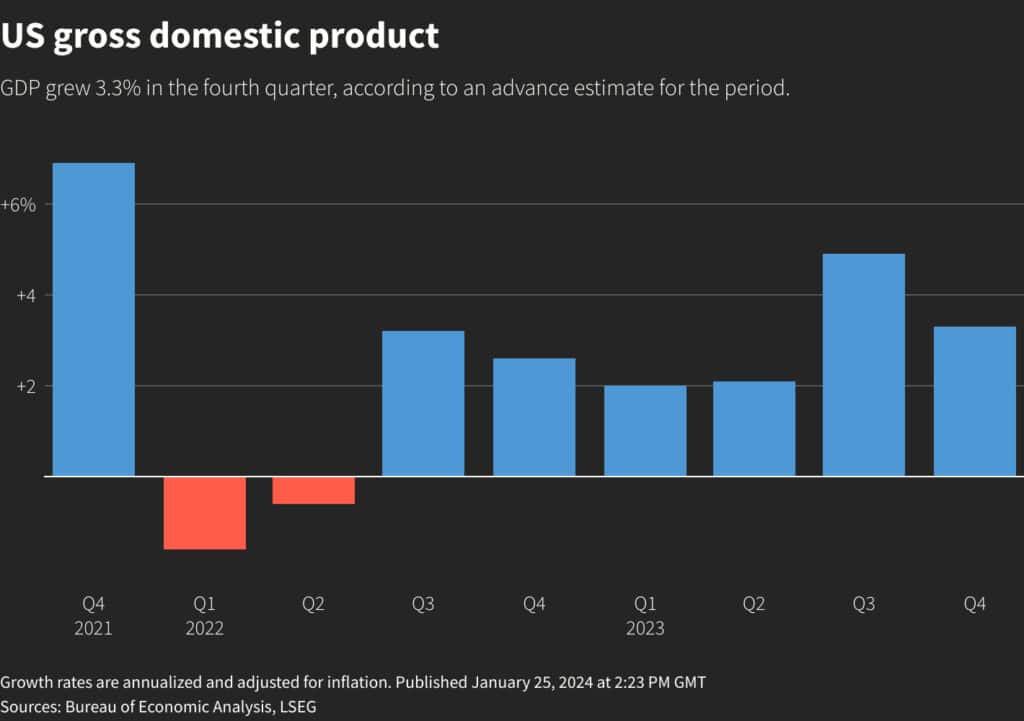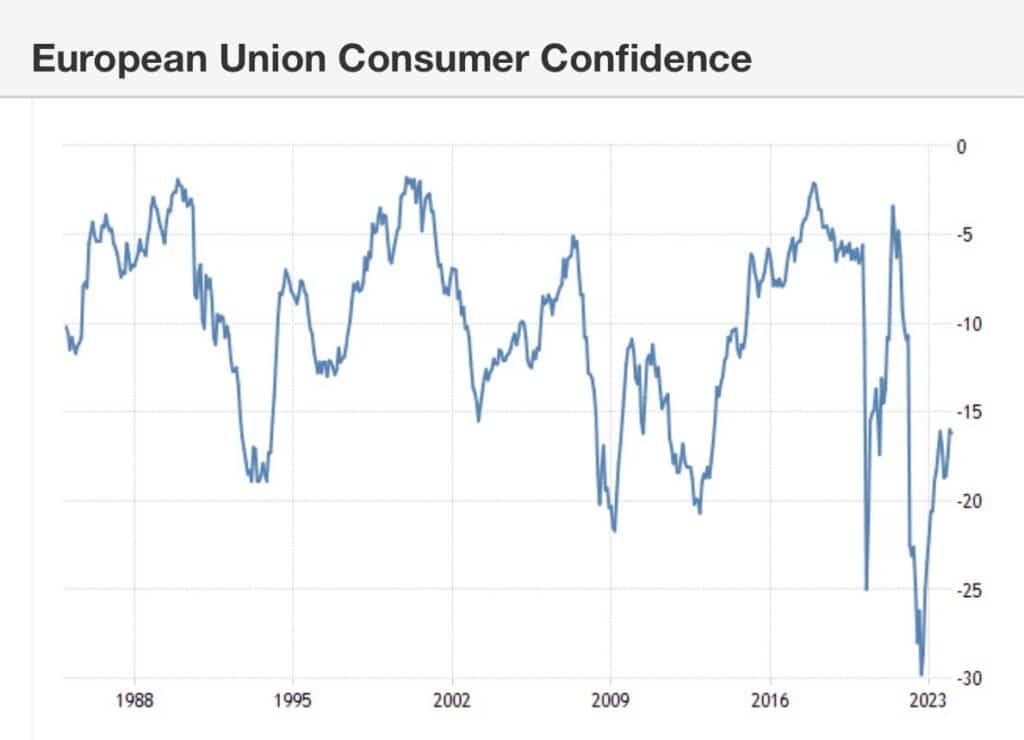What to expect from the US GDP data
The upcoming first revision of Q4 US GDP data, scheduled for Wednesday, February 28th at 13:30 GMT, is highly anticipated as it provides a comprehensive assessment of the nation’s economic performance during the fourth quarter. This data, released by the US Bureau of Economic Analysis, offers insights into the growth rate of the country’s gross domestic product (GDP) and the corresponding price index. Economists expect the second estimate of Q4 GDP growth rate to remain unchanged at 3.3%, reflecting steady economic expansion compared to the previous quarter’s robust growth of 4.9%. Similarly, the first revision for the GDP price index for the same period is anticipated to remain at 1.5%, aligning with the original estimate, but below the previous months 3.3%.

Of particular interest is the Personal Consumption Expenditures (PCE) price index, which is projected to average an annual rate of 2.2%, indicating a slight decrease from the previous month and nearing the Federal Reserve‘s 2% target. This trend in consumer-price growth is closely monitored by the central bank, which has signalled a willingness to adjust borrowing costs based on inflationary pressures. Additionally, the probability of recession, as indicated by economists, has decreased to 40%, the lowest level since mid-2022, suggesting improved economic resilience and stability. Overall, the upcoming US GDP data release will provide valuable insights into the health and trajectory of the nation’s economy, influencing market sentiment and guiding future policy decisions.
What to expect from the EU Consumer Confidence data
The upcoming release of EU Consumer Confidence data, scheduled for Wednesday, February 28th at 10:00 GMT, is anticipated to provide valuable insights into the sentiment and expectations of consumers within the Eurozone. One key indicator to watch is the Economic Sentiment Indicator for February, which is expected to remain relatively stable at a consensus of 96.7, marginally down from the previous forecast of 96.8 and above the previous month 96.2. Similarly, the Consumer Confidence index for the same period is forecasted to hold steady at -15.5, aligning with expectations and signalling a consistent level of consumer optimism compared to the previous month’s reading of -16.1. Additionally, analysts will closely monitor Consumer Inflation Expectations for February, with forecasts indicating a slight decrease to 11.3 from the previous month’s figure of 11.9. These inflation expectations offer insights into consumer perceptions of future price levels, which can impact spending behaviour and overall economic activity.

What is US GDP data
US GDP data, released quarterly by the US Bureau of Economic Analysis (BEA), provides a comprehensive measure of the nation’s economic performance. GDP, or Gross Domestic Product, represents the total monetary value of all goods and services produced within the United States during a specific period, typically a quarter or a year. It serves as a crucial indicator of economic health, reflecting the overall level of economic activity and growth within the country.
This data encompasses various components, including consumer spending, business investment, government expenditures, and net exports. As one of the most widely followed economic indicators, US GDP data influences policy decisions, investor sentiment, and market trends, making it a key focus for analysts, policymakers, and businesses alike.
Why is US GDP data important
The release of US GDP data holds significant importance for several reasons. Firstly, it provides a comprehensive overview of the country’s economic performance, offering insights into the health and trajectory of the economy. GDP growth indicates the pace at which the economy is expanding or contracting, reflecting trends in production, consumption, investment, and trade.
Secondly, US GDP data serves as a crucial benchmark for policymakers in formulating monetary and fiscal policies. Government officials, including the Federal Reserve, use this data to assess the overall economic conditions and make decisions regarding interest rates, taxation, and government spending. For example, policymakers may adjust monetary policy in response to GDP growth to stimulate economic activity or control inflation.
Thirdly, investors and financial markets closely monitor GDP releases to gauge the strength of the economy and anticipate future market movements. Positive GDP growth signals a robust economy, potentially leading to increased investor confidence and higher stock prices. Conversely, weak GDP figures may raise concerns about economic stability and could trigger market volatility.
Additionally, GDP data influences business decisions, including investment strategies, hiring plans, and pricing decisions. Companies rely on GDP trends to assess market conditions and adjust their operations accordingly. For instance, strong GDP growth may encourage businesses to expand production capacity or introduce new products, while sluggish growth may prompt cost-cutting measures or cautious investment strategies.
What is EU Consumer Confidence data and why is it important
EU Consumer Confidence data, released monthly by the European Commission, provides valuable insights into the economic sentiment and outlook among consumers within the European Union. This data reflects the perceptions and expectations of consumers regarding their personal financial situation, employment prospects, and the overall state of the economy. It is derived from surveys conducted among households across EU member states, offering a comprehensive assessment of consumer sentiment across different regions and demographics.
Consumer confidence is a critical indicator of economic health, as consumer spending constitutes a significant portion of overall economic activity. High levels of consumer confidence typically correlate with increased spending, investment, and economic growth, while low confidence levels may result in reduced consumer spending and economic contraction. Therefore, changes in consumer confidence can influence economic trends, business decisions, and policymaking.
The EU Consumer Confidence data encompasses various components, including assessments of current economic conditions, expectations for future economic developments, and consumers’ willingness to make major purchases. These components provide policymakers, economists, businesses, and investors with valuable insights into consumer behaviour and sentiment, which can inform decision-making processes across various sectors.